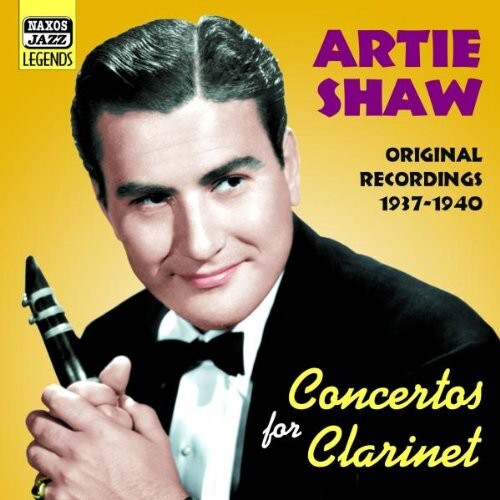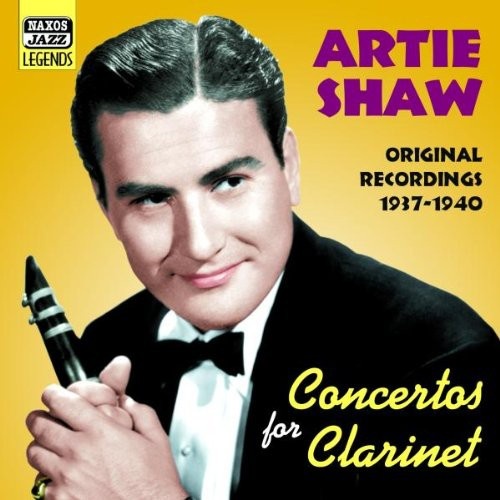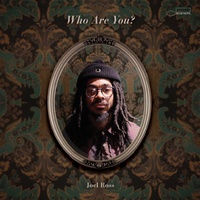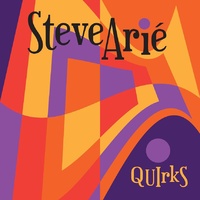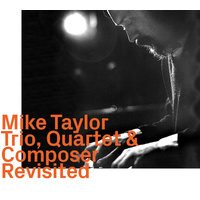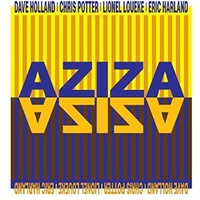'Concertos for Clarinet’ Original Recordings 1937-1940
Of all of the stars of the Big Band Era, none was less suited for success than Artie Shaw. A rugged individualist, idealist, and elitist, Shaw was jettisoned into the mainstream with his 1938 hit recording of Cole Porter’s “Begin the Beguine”, which changed his life and eventually shortened his career. The problem with Shaw was that he had difficulty understanding that ‘music business’ contained two distinctively different words and he spent much of his career trying to do one while fighting off the demands of the other. The songs in this compilation were recorded during the most critical period in Shaw’s career, beginning in 1937 when his attempts at playing ‘symphonic swing’ (combining a jazz combo with a string section) failed and he gave in to commercial pressures by reluctantly forming what he called ‘the loudest goddamn band in the world’.
By July 1937 the strings were gone and, despite its name, Art Shaw and his New Music (held over from his early sessions with the string ensemble) was just another swing band. But from the outset, the difference was the brilliance of Shaw’s clarinet playing. After the conventional opening of Sweet Adeline, Shaw’s horn emerges like a searchlight out of the darkness. His interplay with vocalist Tony Pastor shows Shaw’s facile ability to do just about anything he wanted to on his clarinet.
Shaw’s jungle-esque composition Chant is reminiscent of Jimmy Mundy’s arrangement for Benny Goodman of “Sing, Sing, Sing”, highlighted by the tom-toms of Cliff Leeman (although Shaw had shown that he favoured the clarinet/tom-tom combination before Goodman and Gene Krupa made it a trademark at Goodman’s legendary 1938 Carnegie Hall jazz concert).
The two-part song simply called The Blues is in blues form as its title implies, but is really a medium tempo boogie-woogie kicked off by John Best’s growling trumpet intro. When Shaw comes in two choruses later, it is with a vengeance: virtuosic flurries of cascading notes that precedes John Coltrane’s ‘sheets of sound’ by two decades. Over the years, countless comparisons have been made between the two kings of clarinet swing: Goodman and Shaw, but while Benny often swung harder, Artie continually exhibited better chops and did more imaginative things in his solos than Benny did.
The underrated and inventive singer Leo Watson solos on another Shaw original, Shoot The Likker To Me, John Boy from September 1937, Shaw’s last recording made for Brunswick. By his next session (his first for RCA Victor), Shaw had dispensed with the name Art after a press agent told him that ‘Art Shaw’ sounded like a sneeze. From then on, it was Artie.
At the first Victor session, the old Rudolph Friml operetta favourite Indian Love Call had the misfortune of being paired with “Begin the Beguine”, which quickly became one of the biggest hits of the Swing Era. “Indian Love Call” proved Shaw’s orchestra capable of swinging as hard as that of Goodman or any other band at that time, with Tony Pastor’s gutty vocal driving the swing even harder.
Shaw’s first RCA session also saw the introduction of Billie Holiday as his vocalist, a brazen act for its time that raised eyebrows and caused controversy wherever the band traveled. Black performers had occasionally performed as instrumentalists with white bands, but few had the gumption to feature one out front as a vocalist. But riding high on the success of “Begin the Beguine”, Shaw now had the power to do anything he wanted, and what he wanted was the best singer in the business at the time. Holiday rose to the occasion, her voice and style fully developed by now after a stint with Count Basie in 1937. Although her time with Shaw was brief, her vocal on Any Old Time is confident and selfassured; her years with Shaw would lead to greater stardom as a solo performer.
Non-Stop Flight is one of Artie Shaw’s best original compositions and along with Softly, As In A Morning Sunrise, shows his ability to effortlessly play in the highest register of the clarinet. The latter song appealed to Shaw because of its minor key, a favorite vehicle for Shaw that stemmed from his Jewish roots.
From 1936 to 1938, Shaw was without peer as a musician in his own band. But toward the end of 1938, he hired saxophonist Georgie Auld and drummer Buddy Rich, both of whom were as equally individualistic and irascible as their leader. With their arrival (first Auld and then Rich), Shaw’s rhythm became more insistent, the swing more apparent.
Shaw’s main complaint about the Swing Era, aside from calling jitterbugs ‘morons’, was that bands relied too much on riff tunes and pat calland- response arrangements. Though this is what made for great dancing, Shaw bristled at being called a ‘dance band leader’ and continued to stretch the limits of what conventions were in place during the Big Band Era. Rosalie was another Cole Porter offering from a film of the same name while Pastel Blue (co-written by Shaw with the great trumpet virtuoso Charlie Shavers) showed Shaw painting an Ellington-esque portrait with his band; its ending culminated by Artie climbing the scale to a stratospheric high ‘C’ (concert B-flat).
One of Shaw’s most frenetic performances comes on Traffic Jam, which is kicked off by Shaw glissing like an ambulance siren before shifting into overdrive, propelled by Buddy Rich’s supercharged drumming. Shouts from the normally reserved band show what the combination of Shaw’s leadership and Rich’s driving percussion could do in creating one of the truly exciting moments in the Swing Era.
In November 1939, Shaw, fed up with the pressures of fame and the demands of his audience to play his songs the same way every time, abruptly abandoned his band and fled to Mexico, leaving saxophonist Georgie Auld in charge. By March 1940, a rejuvenated Shaw had reassembled his band in Los Angeles, experimenting once again with symphonic jazz. His group doubled in size, with a full-blown string section featured on a melody Shaw had brought back from his self-induced exile in Mexico. Frenesi would become Shaw’s second biggest hit and thrust him reluctantly back to the top of the best seller’s lists.
An exotic arrangement of the controversial Gloomy Sunday (made popular by Billie Holiday) was the next number at the session. Although not as passionate in her delivery as Holiday, Pauline Byrne nevertheless did her best with the song, which was adapted in 1936 from a Hungarian melody with English words written by Tin Pan Alley’s Sam M. Lewis. The song was banned from many radio broadcasts in the U.S. after allegedly causing suicides among radio listeners.
Shaw’s 1940 comeback also included an added dimension to his orchestra, his own version of the ‘band-within-a-band’ trend that had started with the small Benny Goodman combos in the mid- 30s. The Gramercy 5– (the name was inspired by a New York telephone exchange) consisted of a quintet of Goodman alumni who had been performing at the Avalon Ballroom on Catalina Island. Foremost among them were trumpeter Billy Butterfield and keyboardist Johnny Guarnieri, the latter playing harpsichord, an instrument that evidenced Shaw’s talent for coming up with different sounds. Summit Ridge Drive (named for Shaw’s Beverly Hills street address) was a blues highlighted by Butterfield’s muted trumpet solo and a delicious Shaw clarinet chorus, one of his most melodic. Another Gramercy 5– standout is Dr Livingstone, I Presume, in which the group swings into the jungle, only to emerge with Shaw launching into a klezmer-like freilach to finish off the number with a middle-Eastern flourish.
Shaw’s solo on his October 1940 recording of Hoagy Carmichael’s Star Dust ranks with Louis Armstrong’s “West End Blues”, Coleman Hawkins’ “Body and Soul”, and Bix Beiderbecke’s “Singin’ the Blues” as one of the most emulated works in jazz history. It is perfect in its execution, brilliant in its ingenuity, and so unbelievably melodic that it almost betters its original tune. It remains one of the most memorable sequences played by any musician on any record at any time.
The nine-minute-plus length of the Concerto for Clarinet had to be issued on both sides of a 12-inch 78, which gave Shaw the opportunity to explore several themes in their entirety instead of one in miniature. Shaw hated the three-minute limits of 78 rpm records, which was why he revelled in this stretched-out experiment. After an introduction, Johnny Guarnieri beats out a boogie-woogie, which serves as the first ‘movement’ of the work. In the second movement (which is more like an interlude), Shaw switches to a minor key before proceeding to another favourite combination, the clarinet/tom-tom chorus. The frenzied final movement features Shaw soaring above the band before finishing the concerto off with a cadenza that catapults him up to another improbably high ‘C’.
Cary Ginell – a winner of the 2004 ASCAP/Deems Taylor Award for music journalism
Close the window
(636943280225)
| SKU | 636943280225 |
| Barcode # | 636943280225 |
| Brand | Naxos |
Be The First To Review This Product!
Help other Birdland Records users shop smarter by writing reviews for products you have purchased.

